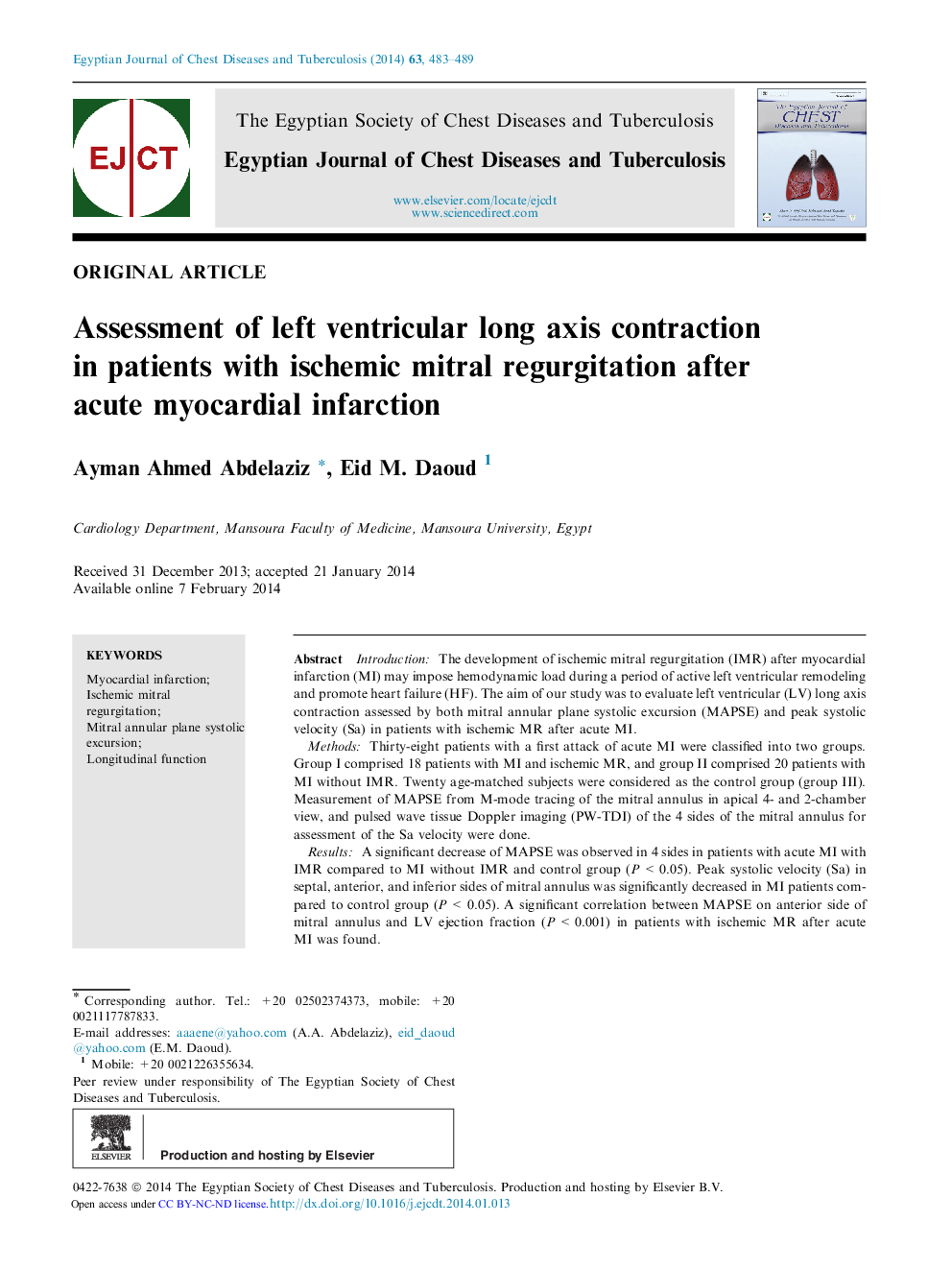| Article ID | Journal | Published Year | Pages | File Type |
|---|---|---|---|---|
| 3400364 | Egyptian Journal of Chest Diseases and Tuberculosis | 2014 | 7 Pages |
IntroductionThe development of ischemic mitral regurgitation (IMR) after myocardial infarction (MI) may impose hemodynamic load during a period of active left ventricular remodeling and promote heart failure (HF). The aim of our study was to evaluate left ventricular (LV) long axis contraction assessed by both mitral annular plane systolic excursion (MAPSE) and peak systolic velocity (Sa) in patients with ischemic MR after acute MI.MethodsThirty-eight patients with a first attack of acute MI were classified into two groups. Group I comprised 18 patients with MI and ischemic MR, and group II comprised 20 patients with MI without IMR. Twenty age-matched subjects were considered as the control group (group III). Measurement of MAPSE from M-mode tracing of the mitral annulus in apical 4- and 2-chamber view, and pulsed wave tissue Doppler imaging (PW-TDI) of the 4 sides of the mitral annulus for assessment of the Sa velocity were done.ResultsA significant decrease of MAPSE was observed in 4 sides in patients with acute MI with IMR compared to MI without IMR and control group (P < 0.05). Peak systolic velocity (Sa) in septal, anterior, and inferior sides of mitral annulus was significantly decreased in MI patients compared to control group (P < 0.05). A significant correlation between MAPSE on anterior side of mitral annulus and LV ejection fraction (P < 0.001) in patients with ischemic MR after acute MI was found.ConclusionMitral annular plane systolic excursion is a useful and superior parameter over peak Sa for assessment of longitudinal LV function in patients with ischemic MR after MI.
